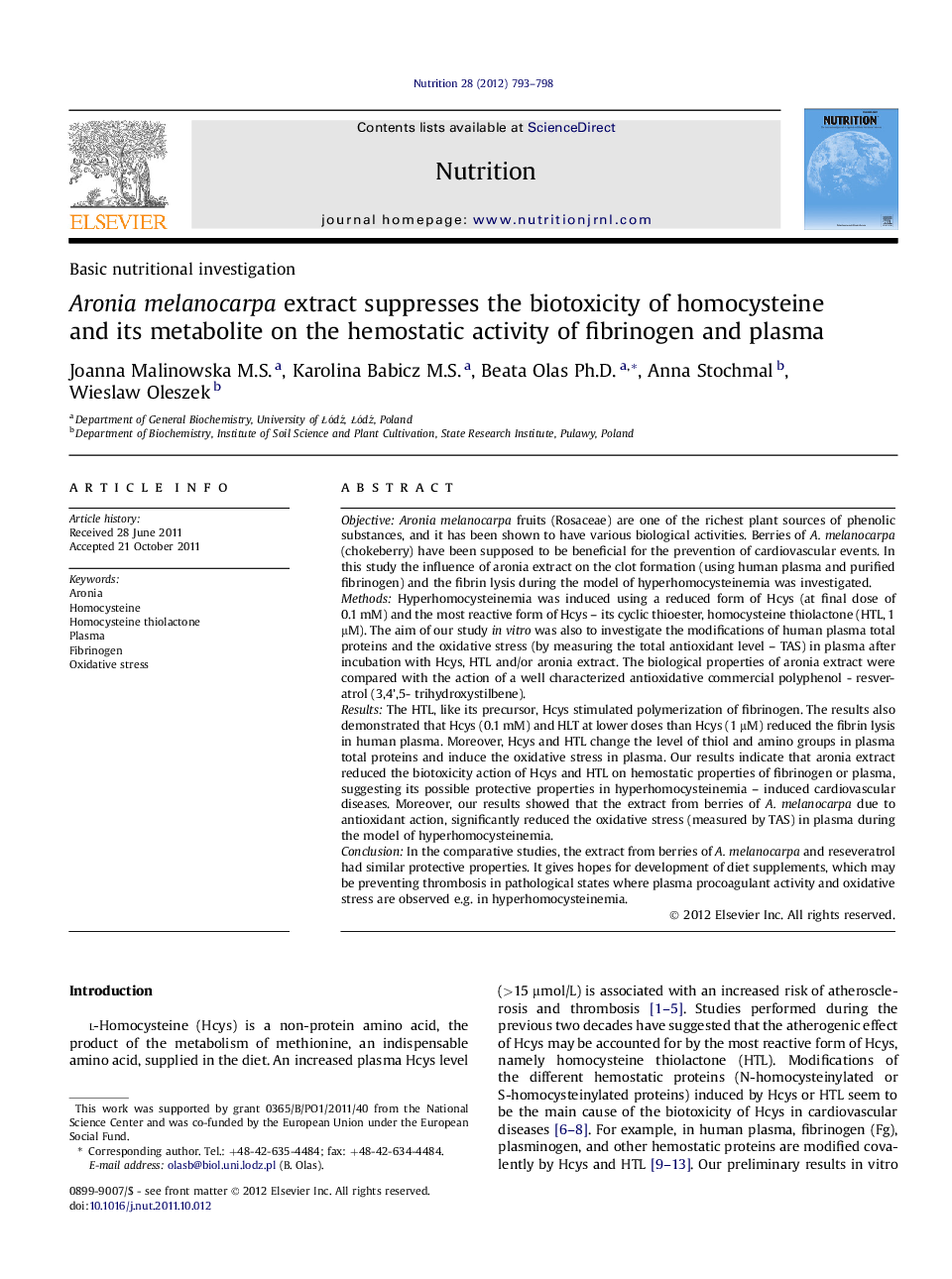| Article ID | Journal | Published Year | Pages | File Type |
|---|---|---|---|---|
| 6090597 | Nutrition | 2012 | 6 Pages |
ObjectiveAronia melanocarpa fruits (Rosaceae) are one of the richest plant sources of phenolic substances, and it has been shown to have various biological activities. Berries of A. melanocarpa (chokeberry) have been supposed to be beneficial for the prevention of cardiovascular events. In this study the influence of aronia extract on the clot formation (using human plasma and purified fibrinogen) and the fibrin lysis during the model of hyperhomocysteinemia was investigated.MethodsHyperhomocysteinemia was induced using a reduced form of Hcys (at final dose of 0.1 mM) and the most reactive form of Hcys - its cyclic thioester, homocysteine thiolactone (HTL, 1 μM). The aim of our study in vitro was also to investigate the modifications of human plasma total proteins and the oxidative stress (by measuring the total antioxidant level - TAS) in plasma after incubation with Hcys, HTL and/or aronia extract. The biological properties of aronia extract were compared with the action of a well characterized antioxidative commercial polyphenol - resveratrol (3,4',5- trihydroxystilbene).ResultsThe HTL, like its precursor, Hcys stimulated polymerization of fibrinogen. The results also demonstrated that Hcys (0.1 mM) and HLT at lower doses than Hcys (1 μM) reduced the fibrin lysis in human plasma. Moreover, Hcys and HTL change the level of thiol and amino groups in plasma total proteins and induce the oxidative stress in plasma. Our results indicate that aronia extract reduced the biotoxicity action of Hcys and HTL on hemostatic properties of fibrinogen or plasma, suggesting its possible protective properties in hyperhomocysteinemia - induced cardiovascular diseases. Moreover, our results showed that the extract from berries of A. melanocarpa due to antioxidant action, significantly reduced the oxidative stress (measured by TAS) in plasma during the model of hyperhomocysteinemia.ConclusionIn the comparative studies, the extract from berries of A. melanocarpa and reseveratrol had similar protective properties. It gives hopes for development of diet supplements, which may be preventing thrombosis in pathological states where plasma procoagulant activity and oxidative stress are observed e.g. in hyperhomocysteinemia.
